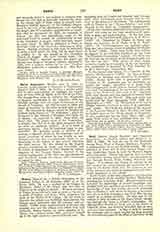

Barcos, MARTIN DE, a French theologian of the Jansenist School, b. at Bayonne, 1600; d. at St. Cyran, 1678. He was a nephew of du Vergier de H”auranne, Abbot of St. Cyran, who sent him to Belgium to be taught by Jansen. When he returned to France he served for a time as tutor to the son of Arnauld d’Andilly and later, 1644, succeeded his uncle at the Abbey of St. Cyran. He did much to improve the abbey; new buildings were erected, the library much increased, and the strictest rule enforced. Unlike many commendators of his day who scarcely ever saw the abbeys over which they held authority, Barcos became an active member of St. Cyran, was ordained priest 1647, and gave himself up to the rigid asceticism preached by his sect. His friendship with du Vergier and Arnauld and, through them, with Port-Royal soon brought him to the front in the debates of Jansenism. He collaborated with du Vergier in the “Petrus Aurelius” and with Arnauld in the book on “Frequent Communion“.
Of his own treatises, some bear on authority in the Church and some on the then much-mooted questions of grace and predestination. To the first class belong (I) “De l’autorite de St. Pierre et de St. Paul” (1645). (2) “Grandeur de l’Eglise de Rome qui repose sur l’autorite de St. Pierre et de St. Paul” (1645). (3) “Eclaircissements sur quelques objections que l’on a formees contre la grandeur de l’Eglise de Rome” (1646). These three books were written in support of an assertion contained in the book “On Frequent Communion“, namely: “St. Peter and St. Paul are the two heads of the Roman Church and the two are one”. This theory of dual church authority, implying an equality of the two Apostles, was condemned as heretical by Pope Innocent X, in 1674 (Denzinger, Enchiridion, 965).
To the second class belong (I) A censure of Sirmond’s “Praedestinatus” (1644). (2) “Quae sit Sancti Augustini et doctrine eius auctoritas in ecclesia’?” (1650). Barcos holds that a proposition clearly founded on St. Augustine can be absolutely accepted and taught, regardless of a papal Bull. That exaggeration of the African Doctor‘s authority was, from the beginning of the controversy, the main prop of the Jansenists who read in St. Augustine what they pleased and then claimed immunity from the authority of the Church. This new error was condemned by Pope Alexander VIII, 1690 (Cf. Denzinger, no. 1187). (3) “Exposition de la foy de l’Eglise romaine touchant la grace et la predestination” (1696). This book was written at the request of the Jansenist Bishop of Aleth, Pavilion, and may be looked upon as the official expose of Jansenism. It was condemned by the Holy Office, 1697, and again 1704, when it was published with the “Instructions sur la grace” of Antoine Arnauld.
J. F. SOLLIER

